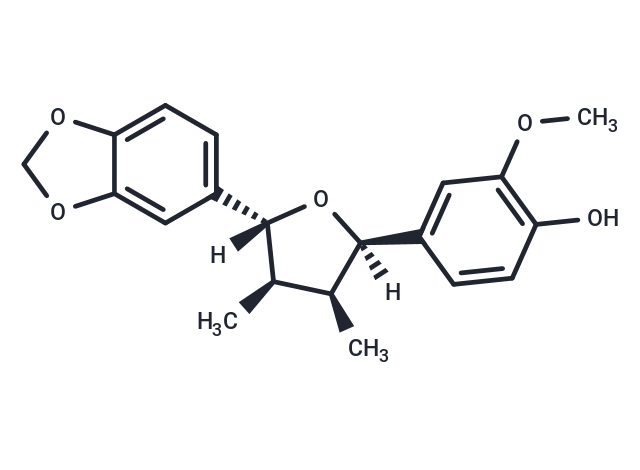Shopping Cart
- Remove All
 Your shopping cart is currently empty
Your shopping cart is currently empty

Chicanine has anti-inflammatory activity in macrophages by down-regulating LPS-induced inflammatory cytokines in IκBα±/MAPK/ERK signaling pathways.

| Pack Size | Price | Availability | Quantity |
|---|---|---|---|
| 10 mg | $550 | Backorder | |
| 1 mL x 10 mM (in DMSO) | $390 | Backorder |
| Description | Chicanine has anti-inflammatory activity in macrophages by down-regulating LPS-induced inflammatory cytokines in IκBα±/MAPK/ERK signaling pathways. |
| In vitro | In this study, Chicanine, one of the major lignan compounds of S. chinesis, was investigated for suppressive effects on lipopolysaccharide (LPS)-induced inflammatory responses in murine macrophages (RAW 264.7 cells). Chicanine was found to have anti-inflammatory properties with the inhibition of nitric oxide (NO) and Prostaglandin E (2) (PGE2) production and nuclear factor-κB (NF-κB) signaling in LPS-stimulated RAW 264.7 cells with no cytotoxic effects. Treatment of RAW 264.7 cells with Chicanine down-regulated LPS-induced expression of pro-inflammatory cytokines including TNFα±, IL-1β, MCP-1, G-CSF, cyclooxygenase-2 (COX-2) and inducible nitric oxide synthase (iNOS). These inhibitory effects were found with the blockage of p38 mitogen-activated protein kinase (MAPK), extracellular signal-regulated kinases 1 and 2 (ERK 1/2), and also IκB-α± phosphorylation[1] |
| Molecular Weight | 342.39 |
| Formula | C20H22O5 |
| Cas No. | 78919-28-5 |
| Relative Density. | no data available |
| Storage | Powder: -20°C for 3 years | In solvent: -80°C for 1 year | Shipping with blue ice. |

Copyright © 2015-2025 TargetMol Chemicals Inc. All Rights Reserved.